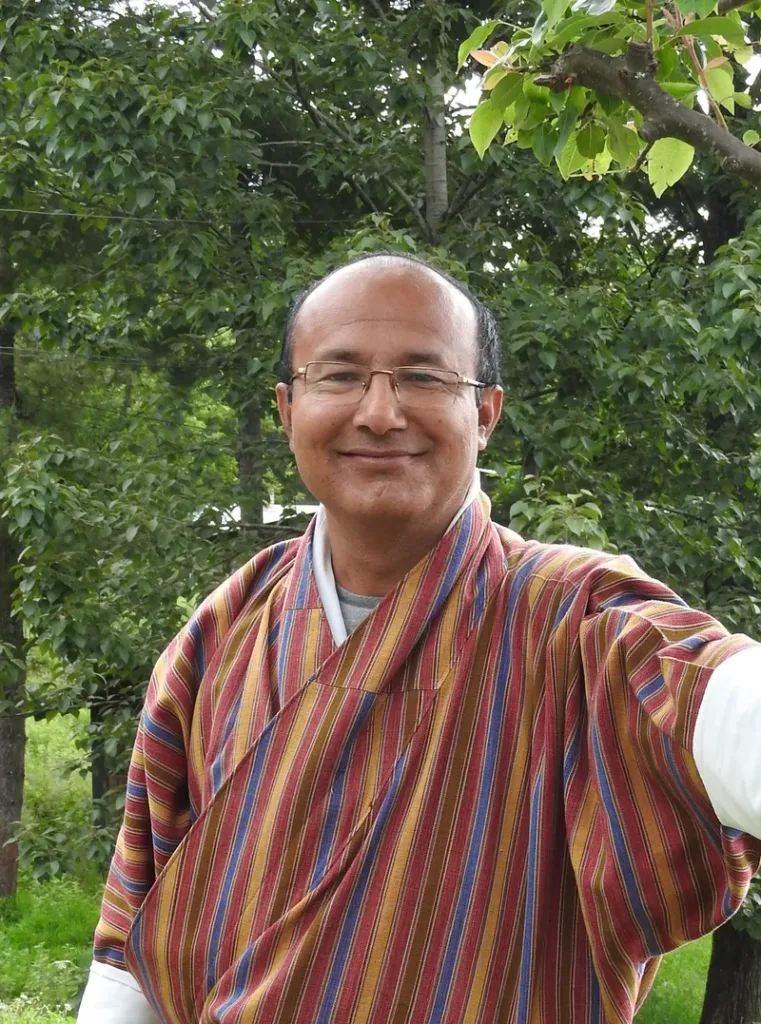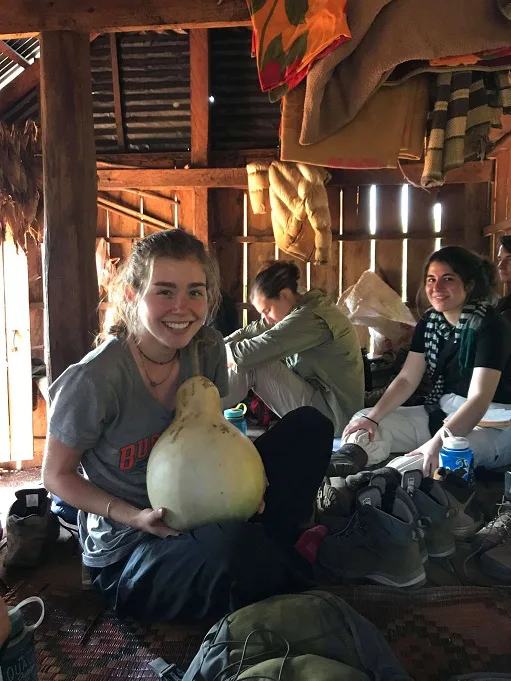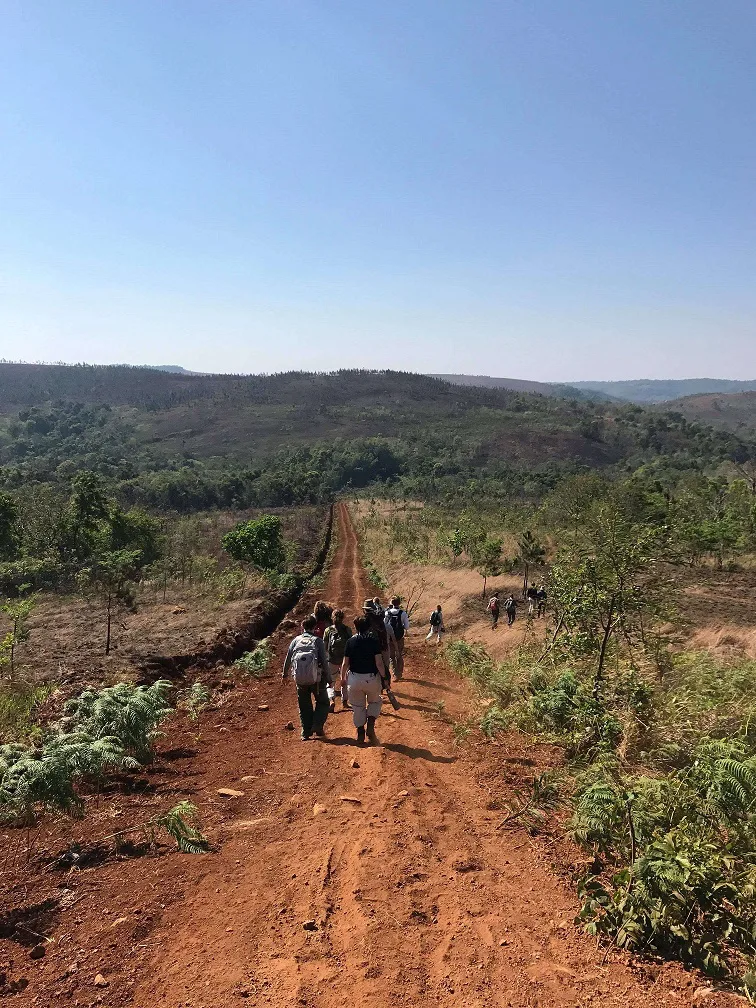
By: Purna Chhetri, PhD
A Glimpse into Tradition
A man, a woman, and a girl on a small motorbike drove ahead of our minivans, guiding us along a rutted road thick with dry season dust. Highland agriculturists across Southeast Asia widely use shifting cultivation, also known as swidden, to farm in these regions with low soil fertility where nutrients wash away down the hills. The mechanics of this type of farming were discussed in class but once we were in the highlands, we went to see for ourselves, as is the SFS way. A kind Indigenous Bunong family from the village of Dak Dam invited us to see their farm and ply them with questions. Going to a highland farm typically involves a steep descent and this visit was no different. Leaving our vans at the top of the nearest hill, students hiked down to the valley floor and then through some brakes of bamboo to our destination. The farm itself, still smoking from a recent burning of ground cover, stretched along the floor of the valley, beside a small spring the family uses for cooking and bathing. It is the season for the clearing and preparing of fields, hot and dusty work, and the only crop still visible in the ground was a row of pink and green pineapple plants.
Our hosts invited us to sit on the raised wooden floor of their farm hut, and then spoke of their livelihood practices. Dried sheaves of corn hung on a nail over the fire pit, keeping the corn kernels insect-free until planting season at the beginning of the wet season in a few months’ time. Pumpkin and gourd seeds rattled in gourd containers tucked along the walls beside traditional axes and machetes. Handwoven baskets were stacked along the rafters and walls.

Our hosts explained their traditional practices of mixed cropping, planting vegetables like pumpkin, maize, gourds, squash, chilis, cucumbers, and eggplant alongside their highland rice. The ash of the burned ground cover is the only traditional fertilizer. Eventually, the fields produce less yield, at which point families rotate through a series of plots that may lie fallow for 15-20 years between usage cycles. All crops are rainfed only, and the rice is harvested by hand by pulling the grains off the stalks and placing them in baskets worn around one’s waist. Their farm is several long miles from the permanent village. Like many of their neighbors, they ride or walk out to the hills in the morning, returning at the end of the day and sometimes sleeping for several nights at their farms in busy seasons.
This way of life is becoming rarer. Cash crops like rubber and pepper are on the rise in the highlands, for those with the economic capital to invest in them, often in-migrants from the Cambodian lowlands. Some indigenous people sell their land to outsiders, while others struggle to protect it. Our students study these complex and contentious issues. But for this one morning we were privileged to have a small glimpse into the lives of a family still practicing their traditional methods of subsistence agriculture.

Related Posts


Alumni Reflections: Stories of the Return to Kenya
